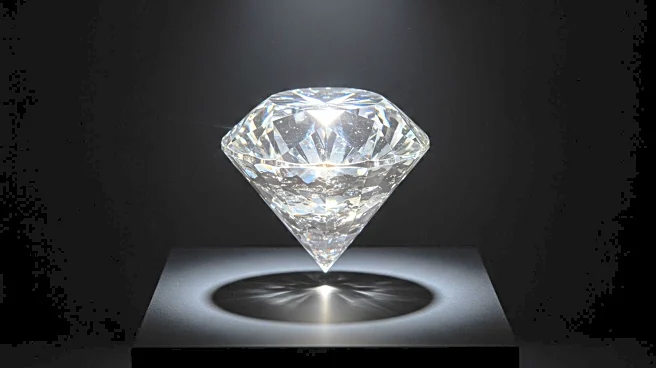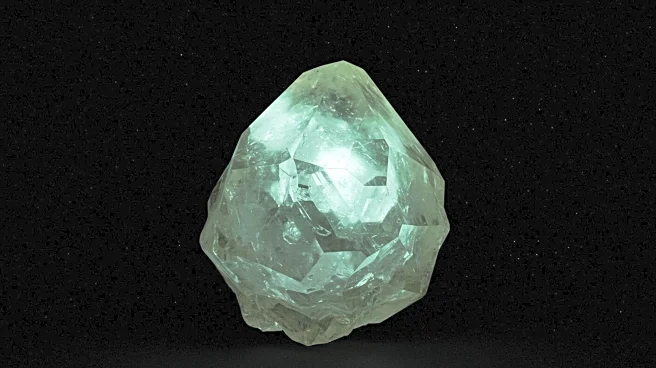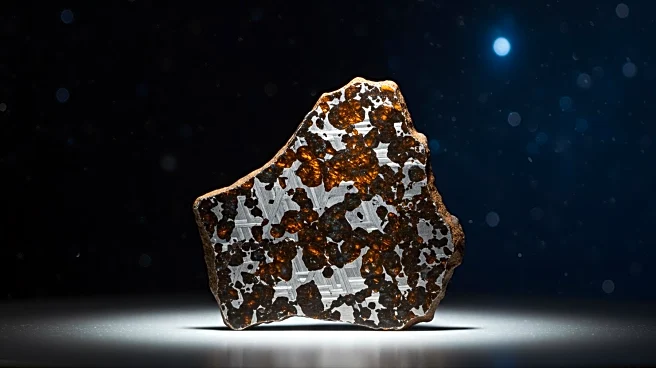What's Happening?
Researchers have successfully synthesized a meteorite diamond, known as lonsdaleite or hexagonal diamond, which is predicted to be significantly harder than conventional diamonds found on Earth. This breakthrough was achieved using a high-pressure, high-temperature technique that produced small disks of the ultrahard diamond. The study, published in the journal Nature, suggests that these diamonds could eventually replace traditional diamonds in various industrial applications, such as drilling tools and electronics. The hexagonal diamond structure, first proposed in the 1960s, was inspired by small impure crystals found in the Canyon Diablo meteorite. The new diamond structure features two different bond lengths, which are theorized to enhance its hardness by 58%. Despite challenges in preparing large enough samples for analysis, the research team successfully confirmed the hexagonal structure using electron microscopy and X-ray crystallography.
Why It's Important?
The creation of hexagonal diamond represents a significant advancement in material science, with potential implications for various industries. If the predicted hardness of these diamonds is confirmed, they could revolutionize sectors that rely on durable materials, such as precision machinery and high-performance electronics. The ability to produce diamonds that are harder than those naturally occurring on Earth could lead to more efficient and cost-effective manufacturing processes. Additionally, the development of hexagonal diamond could pave the way for advancements in quantum technologies and thermal management systems, offering new opportunities for innovation and economic growth.
What's Next?
The research team aims to produce larger and purer samples of hexagonal diamond to further explore its physical and mechanical properties. These efforts are crucial for understanding the full potential of the material and its suitability for real-world applications. The team hopes that within the next decade, hexagonal diamond will begin to replace conventional diamonds in industrial technologies. Continued experimentation and refinement of the synthesis process will be necessary to achieve this goal, potentially leading to widespread adoption in various sectors.
Beyond the Headlines
The development of hexagonal diamond raises questions about the ethical and environmental implications of synthetic diamond production. As industries move towards adopting these new materials, considerations regarding the sustainability of production processes and the impact on natural diamond markets will become increasingly important. Furthermore, the ability to create diamonds with enhanced properties may lead to shifts in cultural perceptions of diamonds, traditionally valued for their rarity and natural origin.











